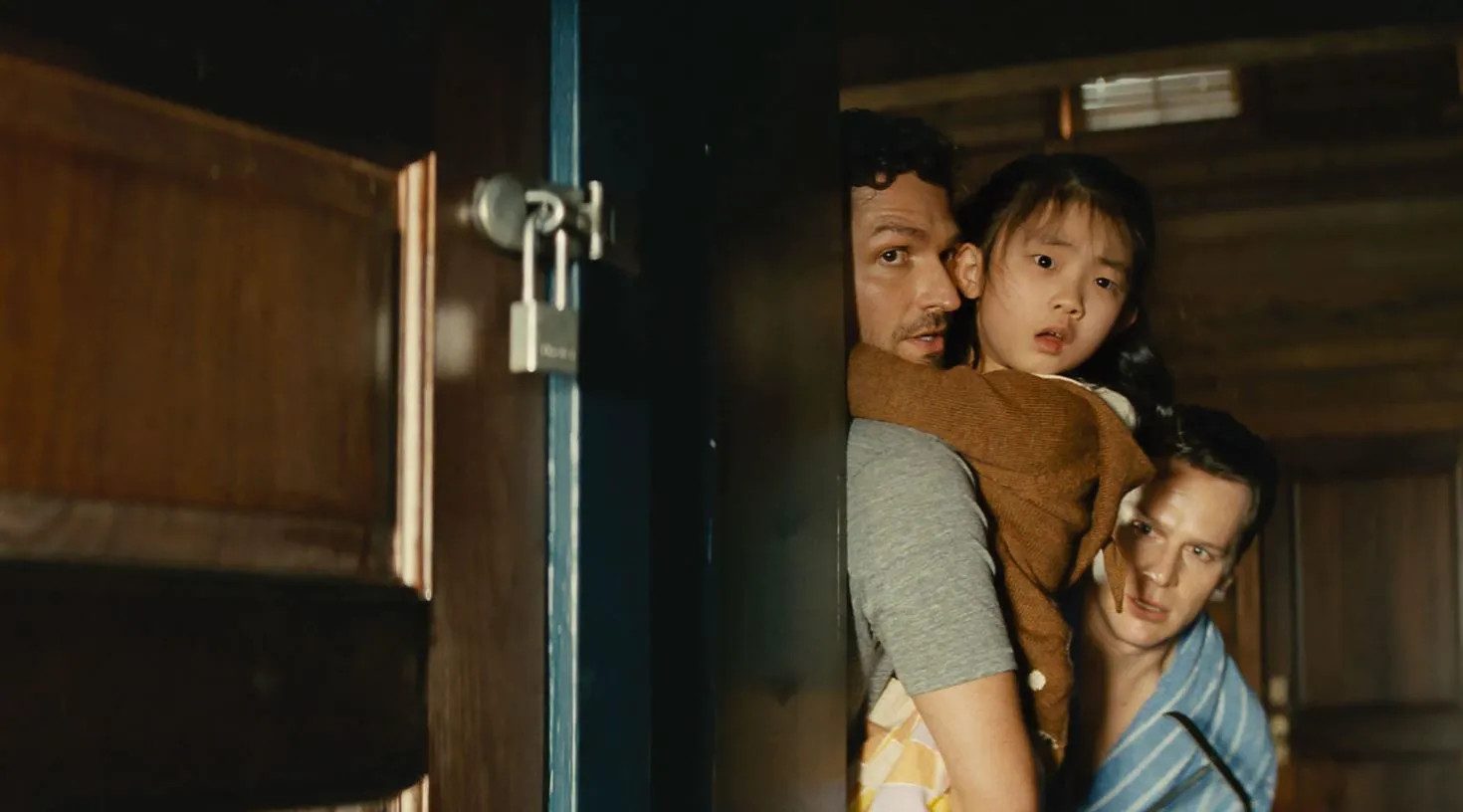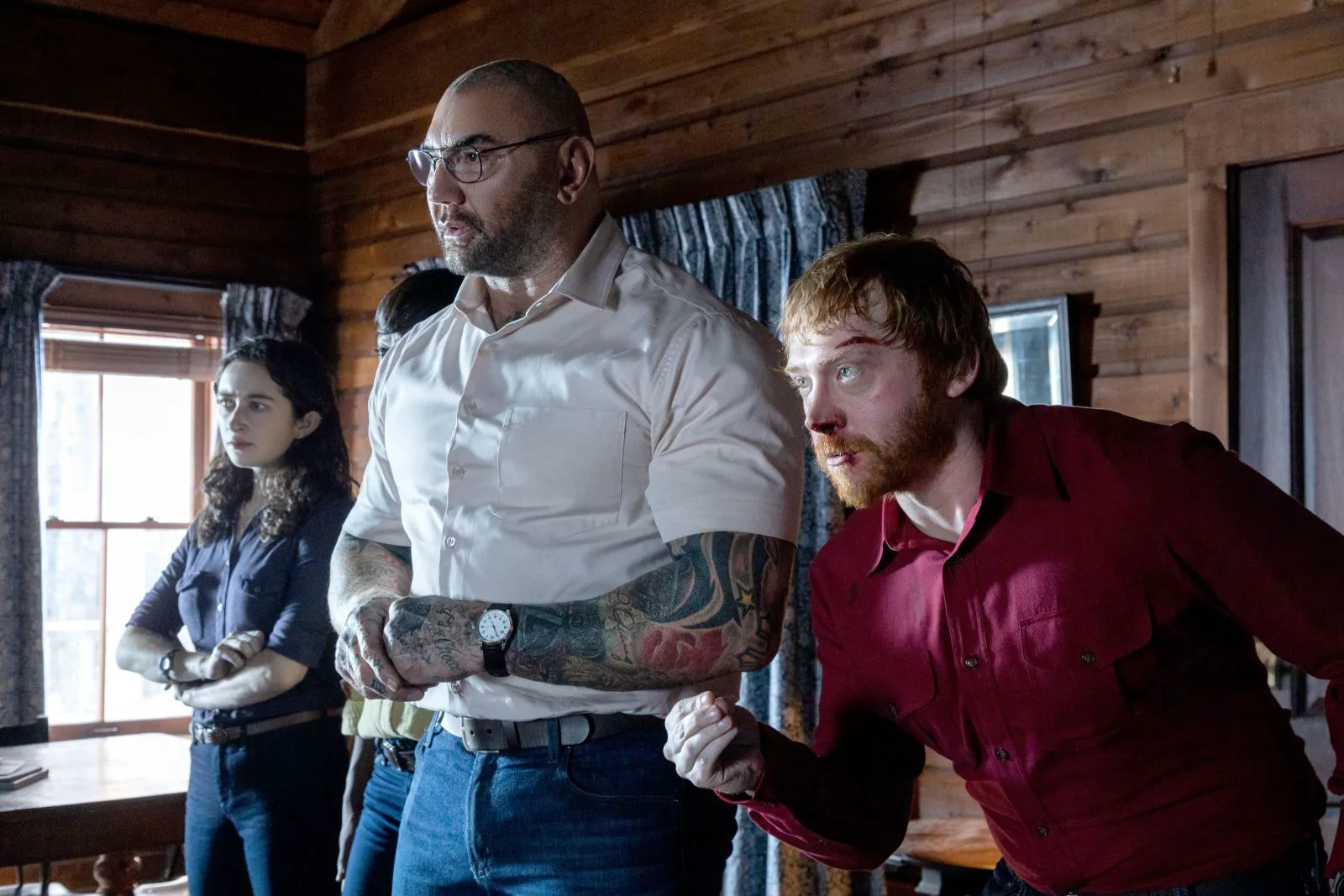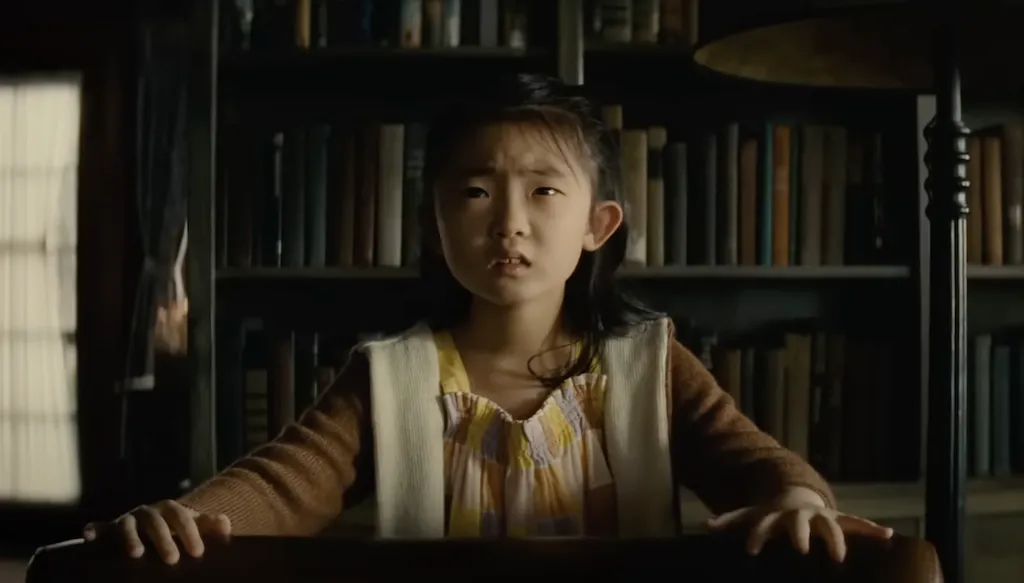M. Night Shyamalan’s name still evokes a range of emotions in Hollywood, from outright disdain to utter admiration. However, the most common reaction to his work is often confusion, a slight cognitive dissonance, a silent, unanswered question. While crowd-pleasers like “Split” and “The Sixth Sense” offered a clear understanding of the director’s message, films like “The Happening” or “The Village” were open to various interpretations. The problem is that modern audiences are often lazy, especially when it comes to niche genres like psychological or mystical thrillers. In the public consciousness, thrillers are more associated with mood and atmosphere than with deep, meaningful context. Shyamalan’s attempts to make the genre more intellectual often fail, and “Knock at the Cabin” is, unfortunately, no exception.

Jonathan Groff as Eric in a scene from “Knock at the Cabin”
Eric (Jonathan Groff), Andrew (Ben Aldridge), and their young daughter Wen (Kristen Cui) are renting a cabin in the woods for the weekend. Everything is perfect until a group of strangers arrives at their doorstep: Leonard (Dave Bautista), a schoolteacher; Redmond (Rupert Grint), a bartender; Sabrina (Nikki Amuka-Bird), a nurse; and Adriane (Abby Quinn), a young mother. The four are convinced that the planet is on the brink of a terrible natural disaster, and only Eric, Andrew, and Wen can save everyone from certain doom. To do so, one of them must consciously sacrifice themselves, as this is the only way to atone for the sins of humanity.

Dave Bautista as Leonard in a scene from “Knock at the Cabin”
Unlike today’s slow-burners, which focus on gradually increasing tension, “Knock at the Cabin” immediately throws you into the thick of things. A fragile family idyll is shattered by a sudden invasion, a dense forest is overshadowed by the impending apocalypse, uninvited guests pose as prophets, and loved ones begin to doubt themselves and each other. Most of the action takes place in a confined space – a small cabin where three people must decide the fate of humanity. Eric and Andrew, raised on the ideas of Western individualism, stubbornly reject such a blatant and frankly inhumane attempt to impose collective responsibility. However, the villains are not so simple; they hide their aggression behind a mask of divine enlightenment, confirming their insane ideas through doomscrolling. Deontology clashes with consequentialism, the reality of the characters is questioned, and faith in old foundations begins to crumble.

Kristen Cui as Wen in a scene from “Knock at the Cabin”
Themes and Interpretation
In essence, Shyamalan has filmed a depressing picture of the world in its final days, where abuse becomes the new religion, and love and salvation are replaced by violence and murder. Public consciousness is determined by those in power. In the universe of “Knock at the Cabin,” power belongs to four psychopaths whose reality is based on the idea that only suffering can lead to happiness and long-awaited liberation. The characters have no choice but to believe in someone else’s truth and abandon themselves, thus becoming part of a collective trauma.
Shyamalan’s Gamble
In the context of festival cinema, such a semantic load might be more than satisfying, but from a popcorn thriller with such a conditional narrative language, one expects at least a happy ending. Shyamalan, however, once again plays with the viewer’s perception, throws in a plot twist – this time at the genre level – slipping in social context where you least expect it. And he does it too subtly, too veiled, leaving a heavy, ambiguous void as an additional source of physical discomfort. It is highly likely that the director has overestimated his target audience, failing to realize that the mass audience goes to the cinema primarily to enjoy themselves, and certainly not for a couple of new existential crises.